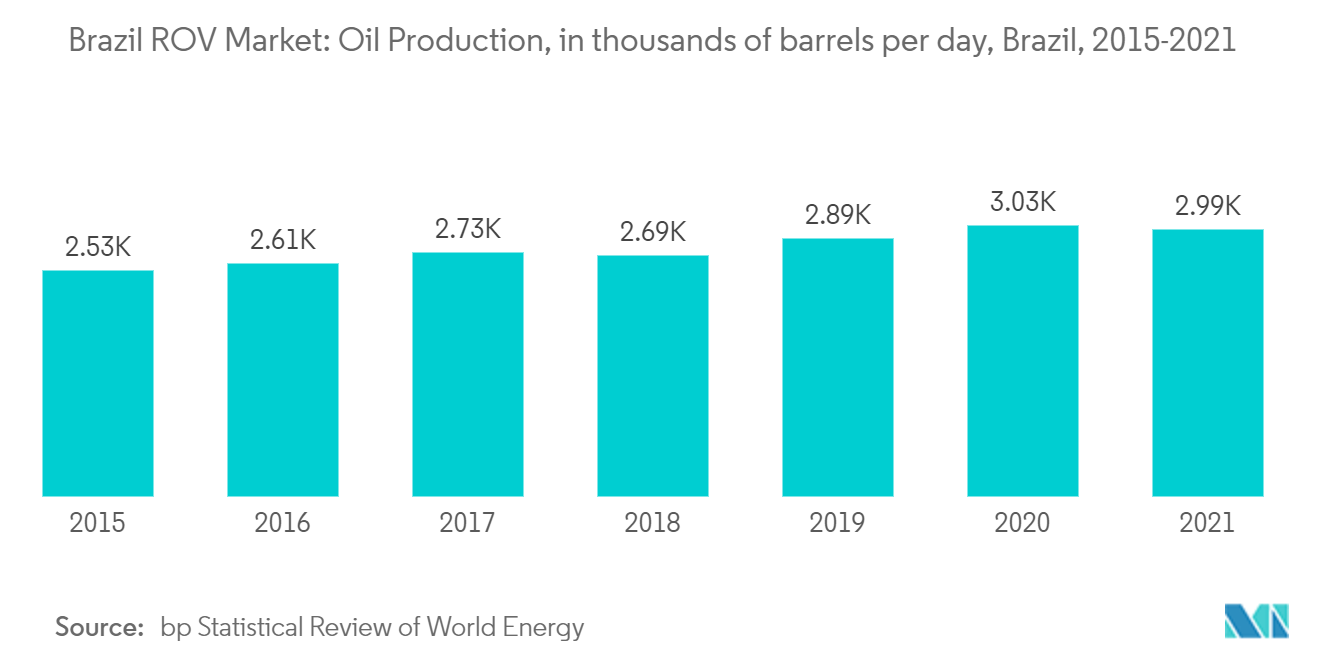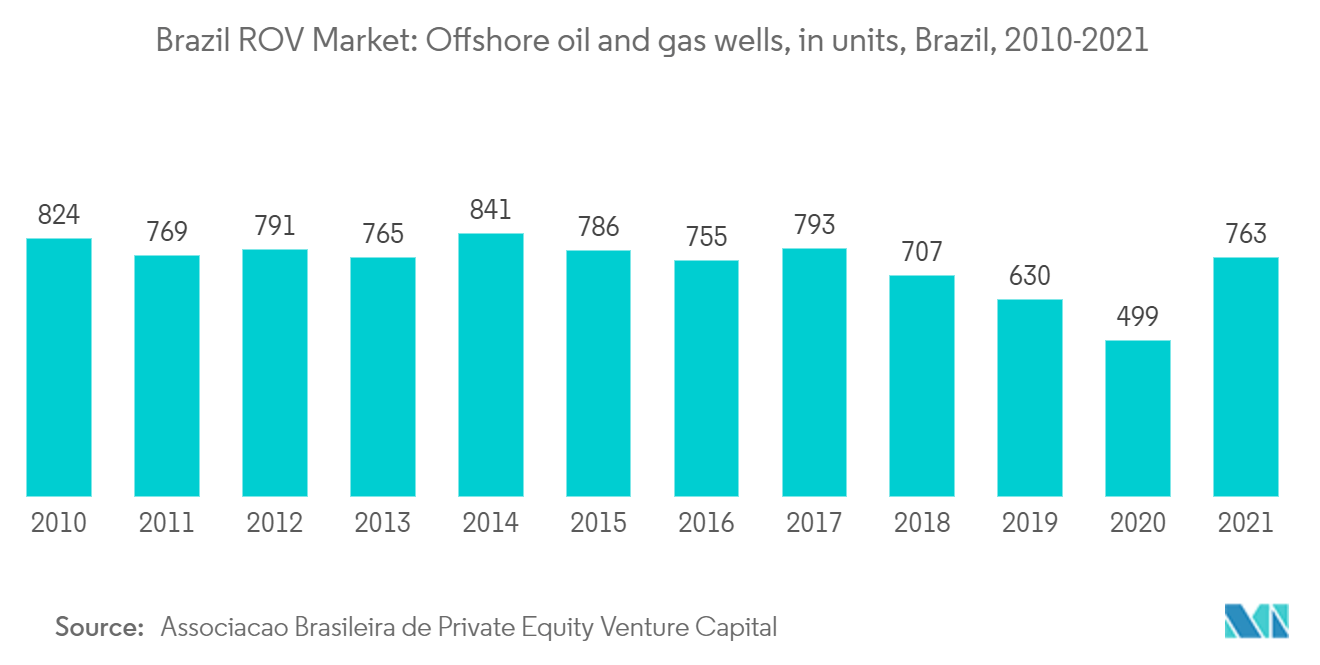Market Trends of Brazil ROV Industry
This section covers the major market trends shaping the Brazil ROV Market according to our research experts:
Oil and Gas Application to Dominate the Market
Oil and gas fields exist under inland water bodies as well as offshore. Exploration, drilling, and development of these resource fields from underwater locations are crucial to supplying the world's ever-growing energy needs.
Remotely Operated Vehicles (ROVs) are useful in the oil and gas industry. The robots are underwater machines that assist with various activities that are related to subsea exploration and development. Due to the rise in the installation of underwater infrastructure for oil and gas field development, ROVs have become almost indispensable in the oil and gas industry. There have been a number of new oil and gas discoveries in Brazil, both shallow and deepwater, which has resulted in an increase in the demand for ROVs.
In July 2022, Equinor Brazil awarded Valaris, represented by Ensco UK Drilling Limited and Ensco do Brasil Petróleo e Gás LTDA, a 540-day drilling contract scheduled to start in 2023 on behalf of the Bacalhau license partners. Valaris DS-17 drillship has been contracted to drill appraisal wells, plug old exploration wells, and conduct additional drilling in Brazil. The contract includes drilling services as well as additional services, such as remotely operated vehicles (ROV), managed pressure drilling (MPD), casing running, slop treatment, and cuttings handling.
In May 2022, Total Energies announced the start of production from the first phase of the giant Mero field in the Libra block, 500 kilometers from Rio de Janeiro, in the prolific pre-salt region of the Santos Basin. This first phase is going to be followed by three additional development phases, with the Mero-2, Mero-3, and Mero-4 floating production, storage, and offloading units (FPSOs), each with a production capacity of 180,000 barrels per day and production start-ups scheduled between 2023 and 2025.
In May 2022, Shell and Petrobras contracted Saipem to use its FlatFish subsea drone for two pilot projects involving the inspection campaigns of two ultra-deepwater fields offshore Brazil operated by the two energy companies. According to BP Statistical Review of World Energy, in 2021, Brazil produced 2.987 million barrels per day of oil, an increase of 19.3% from 2015.
Hence, increasing investments and the use of ROVs in deepwater activities are factors driving the Brazilian ROV market.

A Rise In Deepwater Offshore Development Activities to Drive The Market
As oil companies in South America continue to utilize FPSOs to develop their hydrocarbon resources, Brazil is expected to easily maintain its position as the top country of floating production, storage, and offloading vessels for years to come. Petrobras already has a large number of FPSOs along the southeastern coast of Brazil, and many more will be built over the next few years. The company plans to put 84% of its investments toward oil and gas exploration and production, focusing on assets in deep and ultradeep waters. It announced plans to invest USD 68 billion from 2022 to 2026 to boost oil production in the subsea pre-salt area. A total of 2.7 million barrels of oil equivalent are expected to be produced by Petrobras in 2022, including natural gas and oil.
In July 2022, Equinor and TechnipFMC signed a letter of intent for the integrated front-end engineering and design studies for the BM-C-33 pre-salt project offshore Brazil, which could be worth over USD 1 billion. More than 1 billion barrels of oil equivalent in recoverable resources are estimated to be present in the BM-C-33 development in the Campos basin, which includes the Pao de Acucar, Gavea, and Seat discoveries. A floating production, storage, and offloading vessel with a capacity of 125,800 barrels of oil and 16 million cubic meters of natural gas are going to be used in 2026 to begin operations.
In June 2022, Tenaris was awarded a four-year contract by Petrobras to supply a comprehensive package of products and services for Petrobras' flagship Buzios deepwater project. This Buzios field is among the world's largest deepwater oil and gas fields, with production expected to reach 2 million barrels per day by 2030, up from its current production of 0.7 million barrels per day, which equals approximately 70% of Brazil's total output today. According to Associacao Brasileira de Private Equity & Venture Capital, Brazil has 763 offshore oil and gas rigs, an increase of 52.9% from 2020.
Therefore, based on the factors mentioned above, the oil and gas application segment is expected to dominate the Brazilian ROV market during the forecast period.

